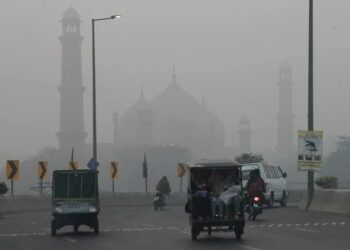Ceasefire under threat as India and Pakistan exchange fire along the Line of Control after the Pahalgam attack. Rising tensions risk a bigger escalation.
India-Pakistan Clash at Line of Control:
There is currently significant pressure on India and Pakistan to abide by the peace deal they signed in 2021 to cease fire along the Line of Control (Loc). The largest cross-border conflict to occur in the past four years began Friday night when Pakistani forces opened fire on many Indian installations in north Kashmir.
The ceasefire agreement is clearly in jeopardy, as seen by this new bloodshed. For the second consecutive day, Pakistani troops fired at several locations along the 740-kilometre Line of Control, according to officials. The Indian Army retaliated by firing back and remaining prepared to handle any additional attacks.
Pakistan Targets Indian Posts Amid Rising Tensions:
According to officials, Pakistani troops attacked many Indian army positions across north Kashmir on Friday night. Indian soldiers strongly answered back, leading to a full night of gunfire. This clash was much bigger than the small, isolated shootings that happened occasionally since the 2021 ceasefire.
Tensions between the two nations have been increasing since the April 22 terror attack in Pahalgam, which claimed 26 lives. Since that attack, there have been more and more incidents of firing along the LOC. The officials say that the current pattern of firing from Pakistan seems to show a clear intention to escalate the situation.
How Did India Respond?
The Indian soldiers, who are always ready at the forward posts along the LOC, responded firmly. In places like Uri, Tangdhar, Kupwara, and Gurez, they retaliated against the Pakistani gunfire. Indian officials made it clear that the Indian Army is fully prepared to handle any future provocation.
They are ready for everything, whether it’s another firing incident or a bigger operation. General Upendra Dwivedi, India’s Army Chief, recently visited Srinagar to review the situation and boost morale among the troops, after noticing the rising tensions.
“The Pakistan Army’s actions are testing the ceasefire that has mostly held. However, there is currently uncertainty about how long it will last. We are ready for anything.“
Why Did Tensions Rise?
The latest clashes started after Pakistani soldiers fired first at Tutmari Gali in north Kashmir on Thursday. This shooting was different because it was not just a single event, it was followed by more firing at multiple points along the border.
On Thursday, Pakistan opened fire using small arms at several locations. Some experts believe they did this because they suspected Indian soldiers had crossed over into their territory. This is called “reconnaissance by fire“, where troops fire to try to discover if enemy forces are nearby. The Pakistani firing covered almost the entire 740 km Line of Control, showing that it was not an accident but a planned action.
History of the Ceasefire:
India and Pakistan had first agreed to a ceasefire in November 2003, but it was frequently broken. Pakistan violated the ceasefire several times, on average over 12 times per day, between February 2020 and February 2021.
Due to this, both sides decided again on February 25, 2021, to respect the ceasefire strictly. Since then, things have been mostly peaceful until now. In past years, when Pakistan violated the ceasefire, it was often done to help militants cross into Indian territory. Now, after the Pahalgam attack, the situation is getting dangerous once again.
India’s Strong Steps Against Pakistan:
After the terror attack that killed tourists in Pahalgam, India took some strong actions against Pakistan, including:
- Suspending the Indus Waters Treaty (1960): This agreement controls how rivers are shared between India and Pakistan.
- Downgrading diplomatic relations with Pakistan.
- Closing Attari, the sole land border crossing.
- Considering military options to strike back at Pakistan for supporting terrorism.
In response, Pakistan has:
- Closed its airspace for Indian airlines.
- All trade with India, including trade via third parties, has been suspended.
- threatened to revoke significant contracts, such as the Simla Agreement.
Possible Future Risks:
As of now, both sides are reacting without using heavy weapons like artillery. Their steps are still in the “non-kinetic domain,” meaning no big attacks yet.
But officials warn that if the situation worsens, we could soon see:
- Use of artillery and heavy weapons.
- A major military escalation along the LOC.
- More civilian and military casualties.
“The moment you move into the kinetic domain (using heavy force), the conflict could get very big, very fast.“
PM Modi and Defence Minister’s Warnings:
Prime Minister Narendra Modi has promised that India will “hunt down terrorists to the ends of the earth.” Defence Minister Rajnath Singh also warned Pakistan, saying that India will soon strike back hard, not only against the attackers but also against their handlers across the Loc. These strong statements show that India is very serious about punishing those behind the Pahalgam attack and preventing future attacks.
Impact on Kashmir and Tourism:
The recent attack in Pahalgam, where tourists were killed, shows a new threat in Kashmir. Earlier, the main worry was terrorists sneaking in across the border. Now, there is a new fear: attacks on tourists and civilians inside Kashmir.
- Stretch the security forces thin.
- It hurt tourism in Kashmir, which is very important for the region’s economy.
- Create fear among locals and visitors.
- Force the army and police to increase security at tourist spots.
Security forces will now have to:
- Watch the Loc for infiltrators.
- Protect vulnerable tourist areas.
- Plan for bigger attacks in the future.
Conclusion:
The 2021 ceasefire deal has been severely strained by the gunfire across the Line of Control. Small-arms fire is being exchanged between India and Pakistan, raising the possibility of a larger clash.
The atmosphere is quite tense, even if neither side has given up on the truce entirely yet. The ability of both nations’ leaders to manage their troops and prevent the crisis from getting worse will determine the future. If not, millions of people on both sides of the border may soon be impacted by another wave of violence in the Kashmir region.
























